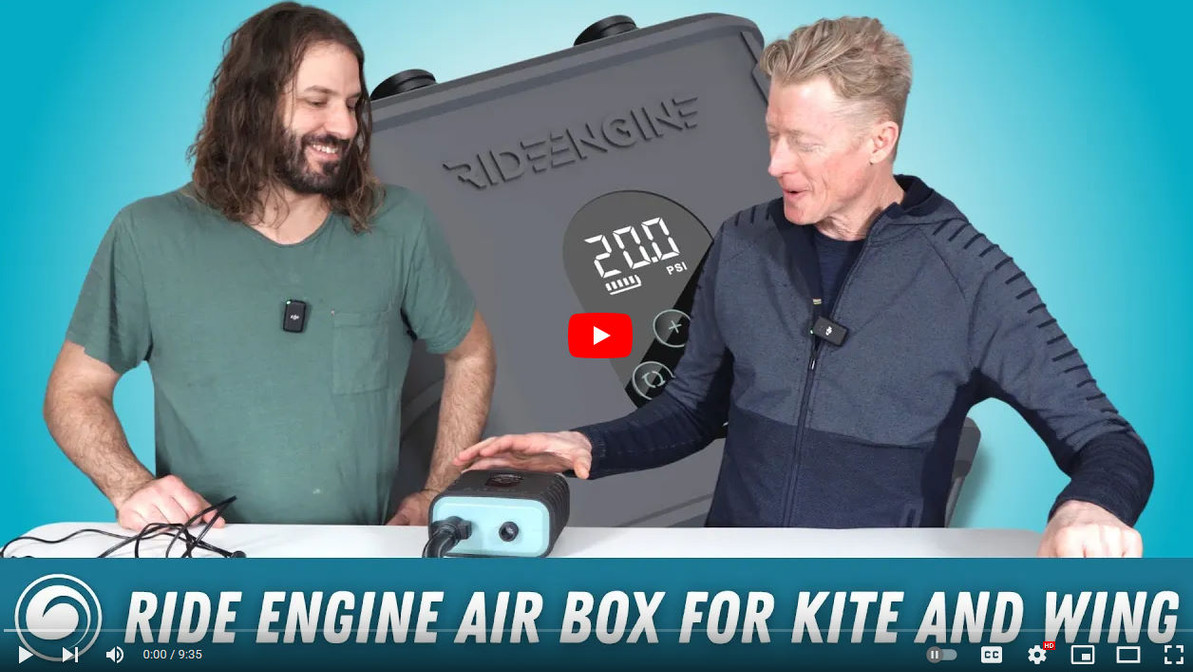Ride Engine Air Box Electric Pump for Kiteboarding and Wing Foiling
Jeff and Tucker are excited to share one of their favorite accessories: the Ride Engine Air Box, an electric pump.
...Wait. They're excited about an electric pump? Are they really that old?? Perhaps, but that's not why they're willing to forego the traditional pre-session warm-up. Here's what's great about this magic box and why you might want one, too.
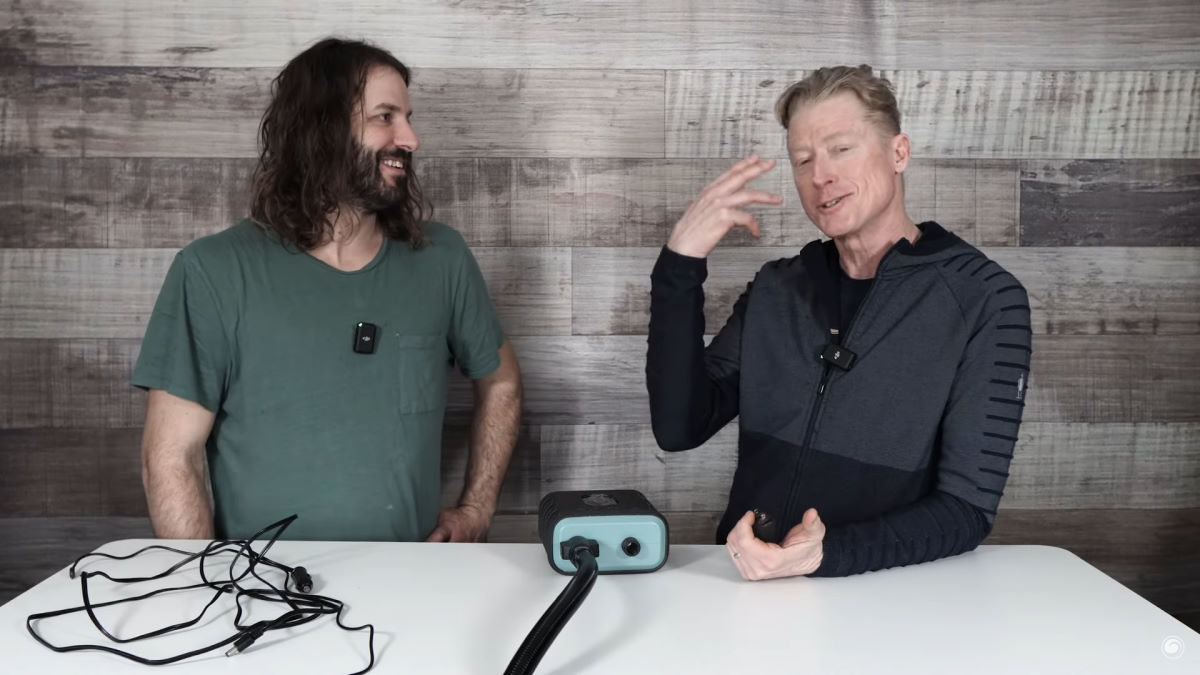
Accessories
Let's first dive in to what you get with your pump. Tucker's favorite accessory that comes with the pump is the car charger. It plugs into your 12V accessory power outlet (or the "cigarette lighter" for those of you with vehicles as old as Tucker), so the pump never leaves your car. Leave it in your rig, plug it in after a session, charge it up as you're driving around, and when it's fully charged, unplug it. You're ready for a session all the time. And if you do forget to recharge it, it's a quick charge to get enough juice to pump up one wing.
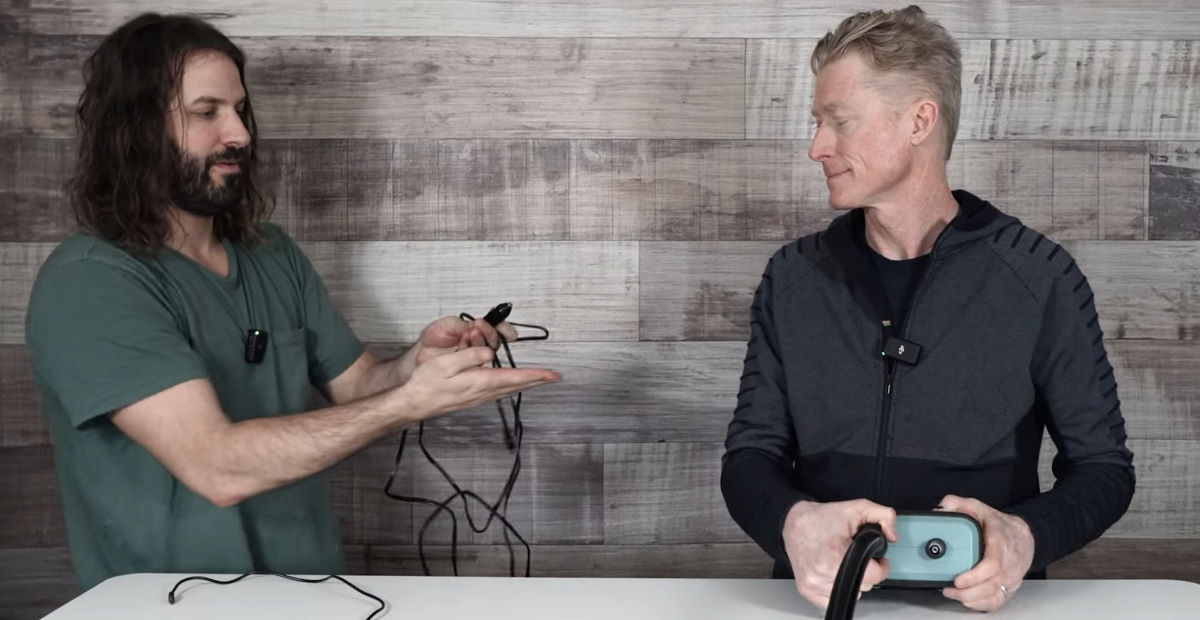
It also includes a USB-C cord. To keep the price of the package down, Ride Engine didn't include a wall adapter, but if you have a smart phone or a tablet that uses USB-C, you can just use your charging block from that. Otherwise you can find one inexpensively online.
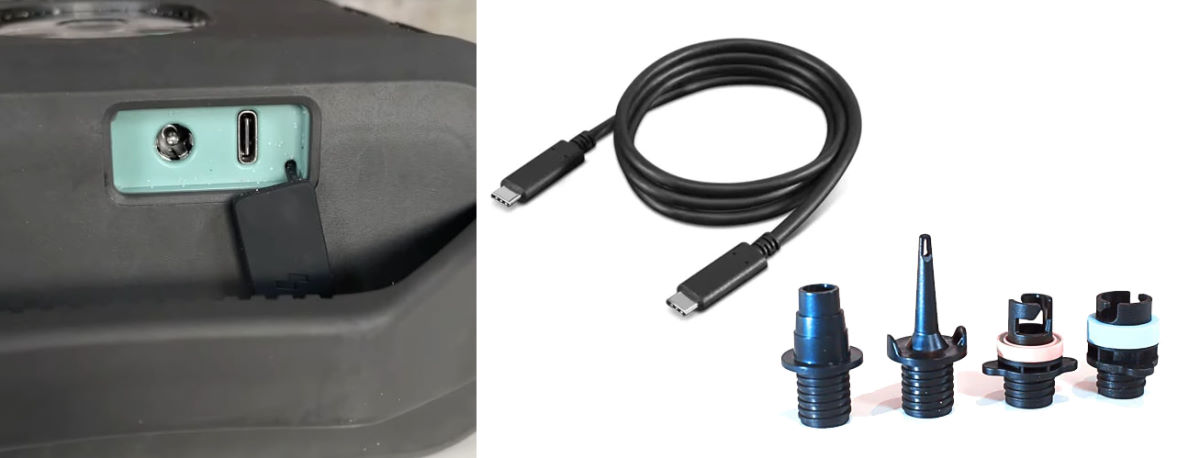
There is a standard hose with a set of four nozzles to fit a variety of kites, wings, and other inflatable sports and beach equipment, including high pressure SUPs, and even beach balls and floaties for those days when the family is joining you at the beach. It'll also accept adapters for brands with proprietary connections, like Duotone. The other end of the hose screws onto the inflation or deflation port of the box.
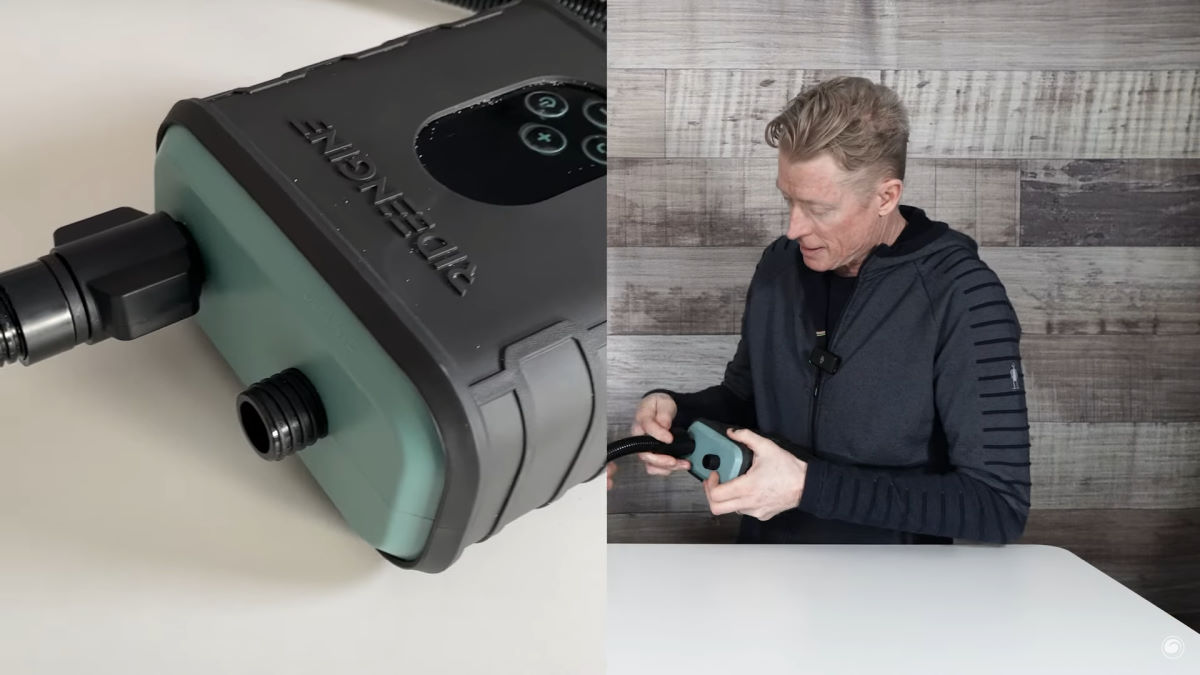
Air Box Features
Not only does the Air Box inflate your stuff, but you can use the deflation side if you want to suck the air out of something like an inflatable paddleboard, or if you're going on vacation and you want to suck all the air out of your wings or kites to pack them down more compactly.
On the top of the box are the two power ports that you can use: the 12V for the car or the USB-C. It will charge fastest with a double-ended USB-C cable like the one included in the package. You can also use a USB-C to USB-A cable, but that will charge more slowly, as will plugging it into your computer rather than the wall since there isn't as much power coming out of the computer. We've been able to recharge it in under an hour, and you can inflate about 10 wings or 7 kites. We pumped up a 17 meter kite in under 3 minutes and the wings in 2 to 3 minutes, depending on how much pressure they needed and the size of the leading edge, so it's quite fast.
It has a digital display on the front showing the PSI and the battery charge. The whole thing is housed in a rugged case with a handle, which is handy if you want to carry it. However, it's small enough to stuff in your kite bag when you're walking down to the beach so you have both hands free to carry other gear. It's also quite lightweight, which is a good thing unless you try to use it to keep your kite or your wing from flying away. It's not heavy enough for that, and you don't want to use the hose as your tether anyway, but if you're a winger you could just use your leash from your board and put it around the wing itself.
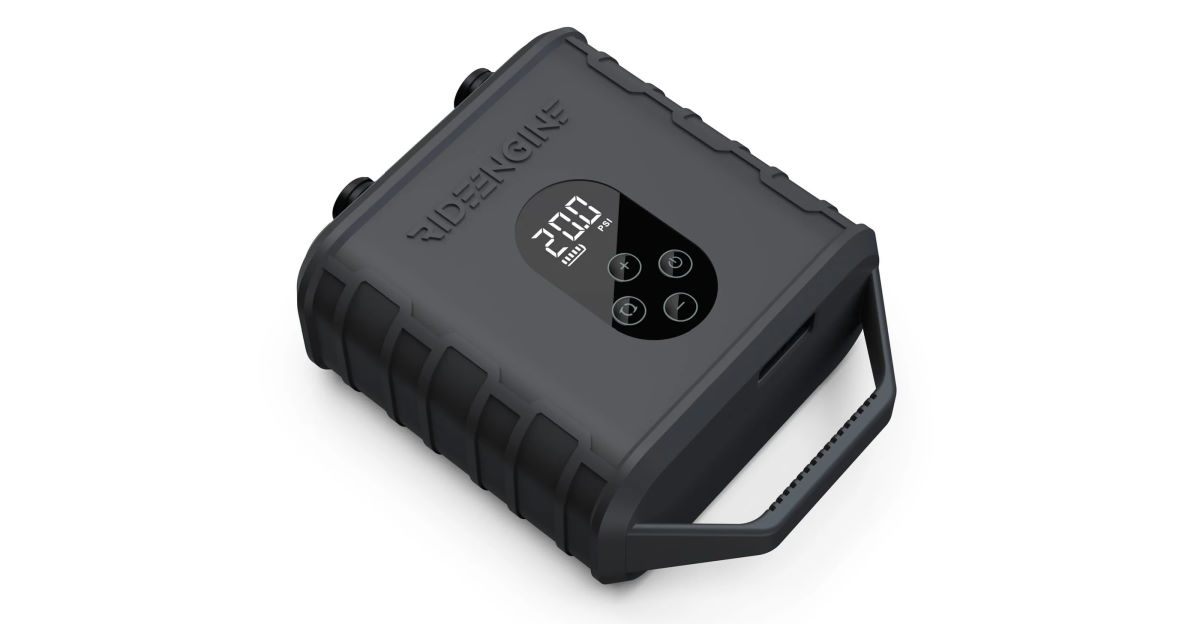
Why You Need This
You can set exactly what inflation pressure you want on your wing or kite and walk away, get your foil ready on your board and get your harness on. When you come back, the pump is off and your wing is done, at the perfect pressure every time. It's easy to set with the plus and minus buttons, and then you just hit the power button. Instead of standing on the beach pumping, you get more time on the water, and you won't have already used a bunch of energy.
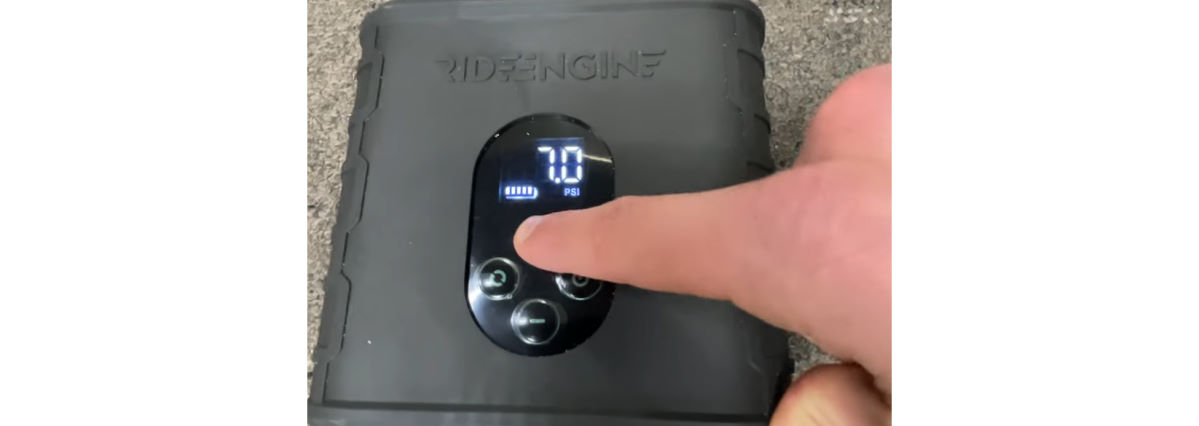
We've all been out riding when the conditions change, and we don't want to come in to swap gear because we don't feel like pumping up another size, so we stay out longer than we should while riding over- or under-powered. The Air Box will make the decision to come in and get the proper size much easier, and then you'll have a better time and be safer.
Oh, and since you can pump multiple wings and/or kites, you may find yourself with new friends.
Cold Weather Tips
In very cold conditions, the pump may not work as efficiently. After it runs a little bit, it does warm up and then it works perfectly, but there are a couple things you can do to help it along. After a session, you can always bring it inside with you rather than leaving it in an ice cold car overnight. This works, but then you risk forgetting it at home. Another option is, once you get to the beach but before you get out of the car, to run the Air Box for a minute to let it suck some warm air from your vehicle through the system and warm up those gaskets so that they can work more effectively. Then the cold should be a non-issue.
Sandy Beach Tips
For the longevity of the unit, do your best to keep sand out of the intake. Some people have made a kind of filter for it, but you might be restricting air flow and risking overheating the pump. You can hold it, or it's easy to just throw it on your canopy when you're inflating, and then it'll have a clean surface to run on.
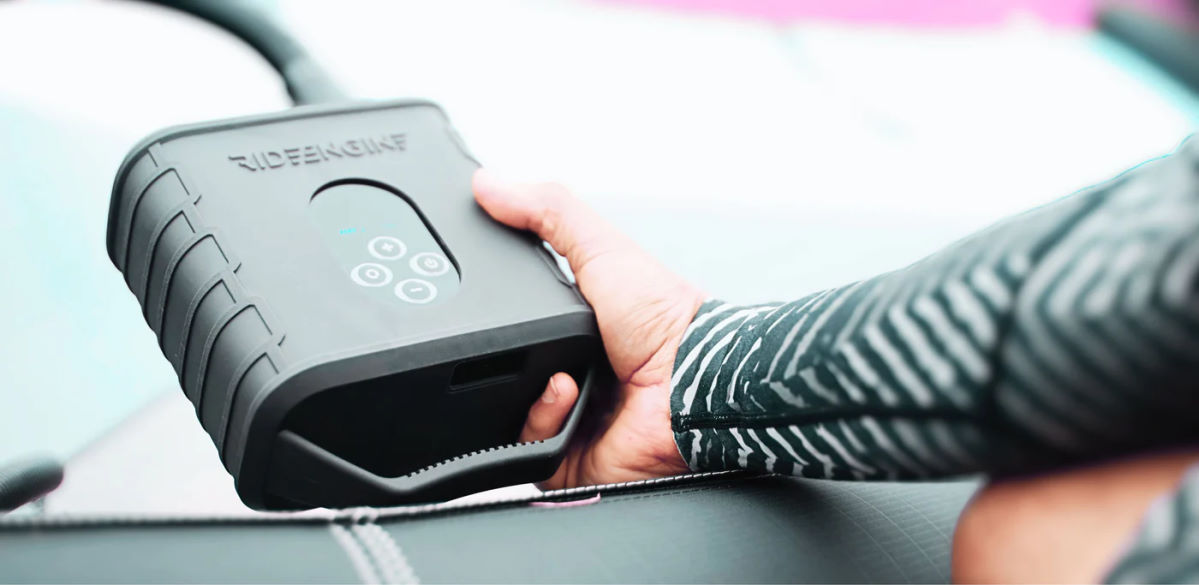
MACkite's Take
The Air Box is a nice upgrade. It's not much more expensive than a normal pump, and it's so much more compact and convenient. It'll make your whole setup process faster and give you more time in the water, and that's what it's all about- more fun.
MACkite Subscription Links:
YouTube | Instagram | Spotify Oddcasts
Contact MACkite Below:
800.622.4655 | Kiteboarder@MACkite.com | LIVE Chat Messenger


Recent Posts
-
Kiteboarding | Crafting the Harlem Force Kite with Sustainability and Performance
Unparalleled Performance Meets Unmatched Sustainability The kiteboarding industry is on …24th Apr 2024 -
Duotone Ventis 2025 | What's New?
If you're familiar with Duotone's Ventis, you know its specialty is freeriding in light wind …23rd Apr 2024 -
Duotone Ventis D/LAB 2025 Overview
If you ride in an area with multiple light wind days and need a wing that'll let you get o …23rd Apr 2024

